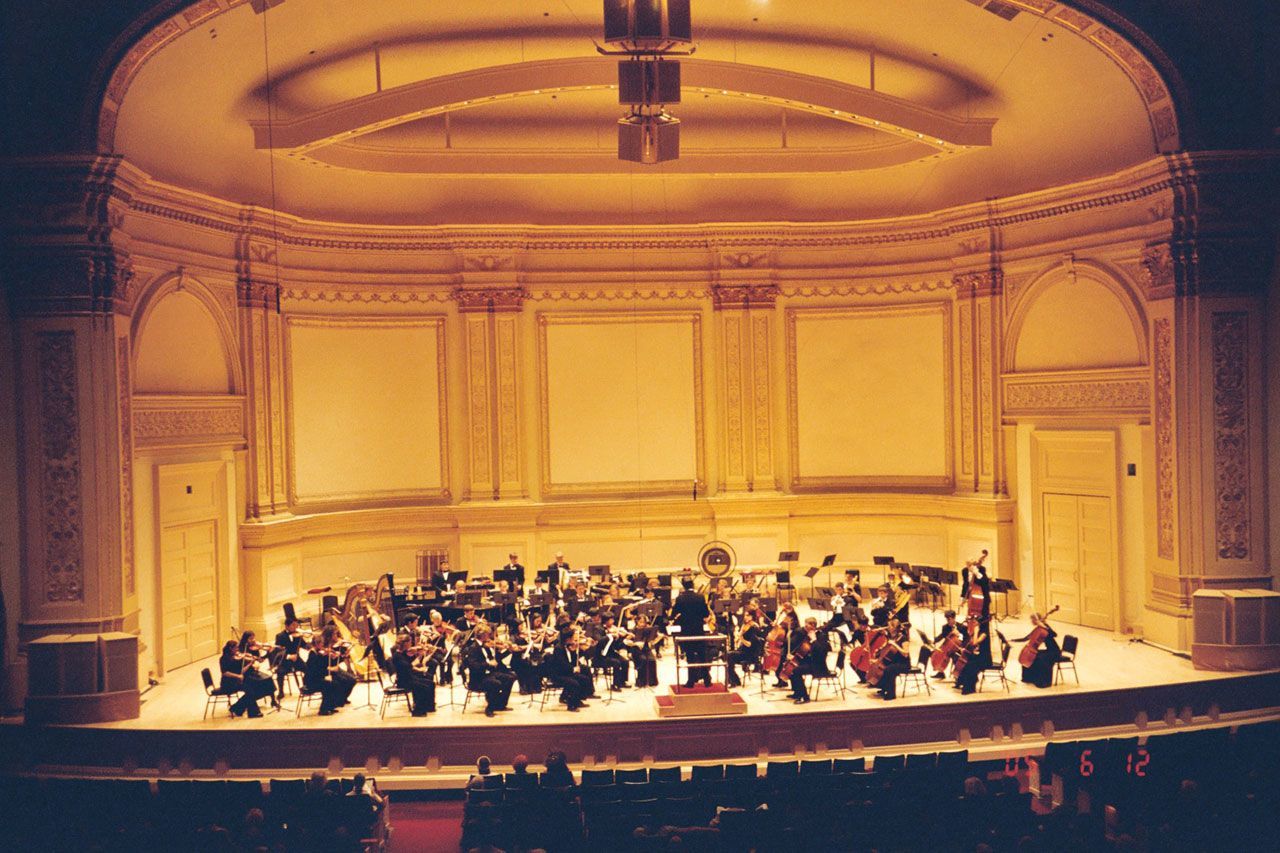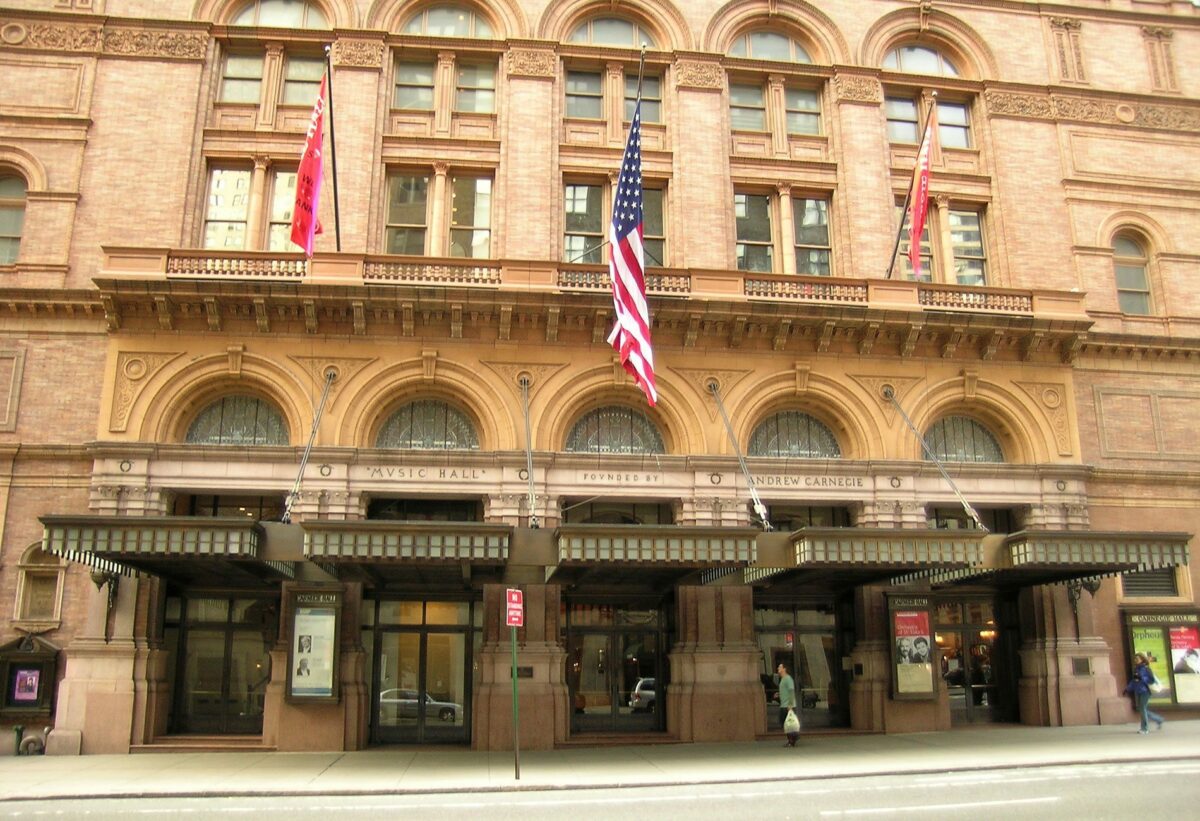Carnegie Hall is a prestigious concert hall located on the island of Manhattan, south of Central Park. The century-old building has hosted some of the biggest names in music and song.
Carnegie Hall is an iconic building for New York and the arts. It is located at the corner of 7th Avenue and 57th Street in the borough of Manhattan.
Its architecture is inspired by the Italian Renaissance style. It was built in brick and brownstone and is one of the few buildings in the city to be made entirely of masonry, that is to say without any metal structure.
Its entrance hall is simple and inspired by Florentine creativity. However, the particularity of the building is in the concert hall where white and gold dominate and impose the solemnity of the place.
The history of Carnegie Hall
Carnegie Hall was commissioned in 1890 by Andrew Carnegie. It was realized by the architect William Burnet Tuthill. The building was inaugurated on May 5, 1891. On this occasion, a concert by Tchaikowski was programmed and conducted by conductor Walter Damrosch.
This first performance positioned Carnegie Hall as the temple of classical music in New York. However, the work was not completed until 1897. In 1925, Andrew Carnegie’s widow sold the building to a major real estate developer, Robert E. Simon.
The New York Philharmonic, which had been housed in the theater, moved to Lincoln Center in 1960. This move and the competition from the new arts center nearly led to the demolition of Carnegie Hall. But thanks to Isaac Stern, the city bought the building for $5 million and granted it historic status.
Restoration work was undertaken and since then, Carnegie Hall has never ceased to offer prestigious performances to full houses.
Carnegie Hall is composed of three halls: Main Hall, Recital Hall, and Chamber Music Hall.
The Main Hall is now called the Isaac Stern Auditorium in honor of the building’s savior. This hall can accommodate 2,800 spectators and is known worldwide for its excellent acoustics.

Recital Hall, also known as Judy & Arthur Zankel Hall, seats 599, and Chamber Music Hall, known as Joan & Sanford I, seats 268.
Visitors can also go upstairs to the Rose Museum, which houses the Carnegie Hall archives. This is a great opportunity to trace the history of the famous concert hall.


